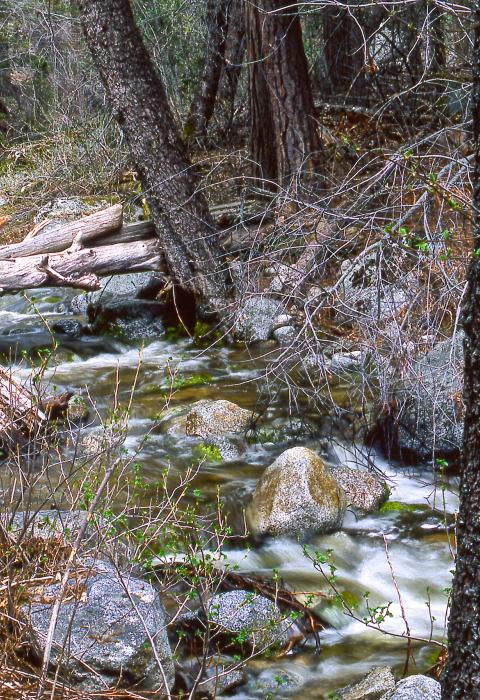North Fork San Jacinto River
California
The source of the North Fork of the San Jacinto River is on San Jacinto Peak in the Mount San Jacinto State Game Preserve and Wilderness Area. The river is free flowing from its headwaters to a diversion on private land, a distance of 11.4 miles; however, flows are intermittently for some of its length during the mid to late summer and fall.
The watershed is steep with an elevation of over 10,000 feet at the upper ridge and an elevation of 3,100 as the river leaves the national forest. The watershed is primitive with evergreen forest at higher elevations and shrub/scrub at lower elevations as the dominant land cover.
The Pacific Crest National Scenic Trail crosses the upper river. Above its confluence with Fuller Mill Creek there is a picnic area, fishing access, and a trail to lovely waterfalls. While there is no camping in the river corridor, there are four campgrounds nearby.
The river supports habitat for many at-risk species, including mountain yellow-legged frogs, California spotted owls, the rubber boa, and the San Bernardino flying squirrel.
Designated Reach
March 30, 2009. From the source of the North Fork San Jacinto River at Deer Springs in Mt. San Jacinto State Park to the northern boundary of Section 17, Township 5 South, Range 2 East.
Outstandingly Remarkable Values
Scenery
The North Fork San of the Jacinto River is located in the San Jacinto Mountains and is characterized by steep, rugged, river-cut canyons. The scenery is diverse, particularly as the elevation changes. Spectacular views of montane meadow with colorful seasonal wildflowers and southern California subalpine forest occur at the highest elevations. As the elevation decreases, mixed conifer and big cone Douglas fir forest come into view. Oak woodlands, chaparral, and grasslands blanket the slopes at the lower elevations.
Riparian woodland consisting of white alder, cottonwood, and various willow species throughout the river corridor. Some of the landscape along the river has been influenced and altered by development, with roads, cabins, and recreation infrastructure present. Seasonal variations in the scenery are very apparent, especially in the fall as the wetland tree species turn golden before shedding their leaves.
Wildlife
The North Fork San of the Jacinto River is historic habitat for, and presently occupied by, a population of federally endangered mountain yellow-legged frog. The river also supports habitat for a genetically isolated population of California spotted owl. Potential habitat for federally endangered southwestern willow flycatcher is also present. The area contains the best remaining habitat for the southern rubber boa in the San Jacinto Mountains and is historic habitat for the San Bernardino flying squirrel.

